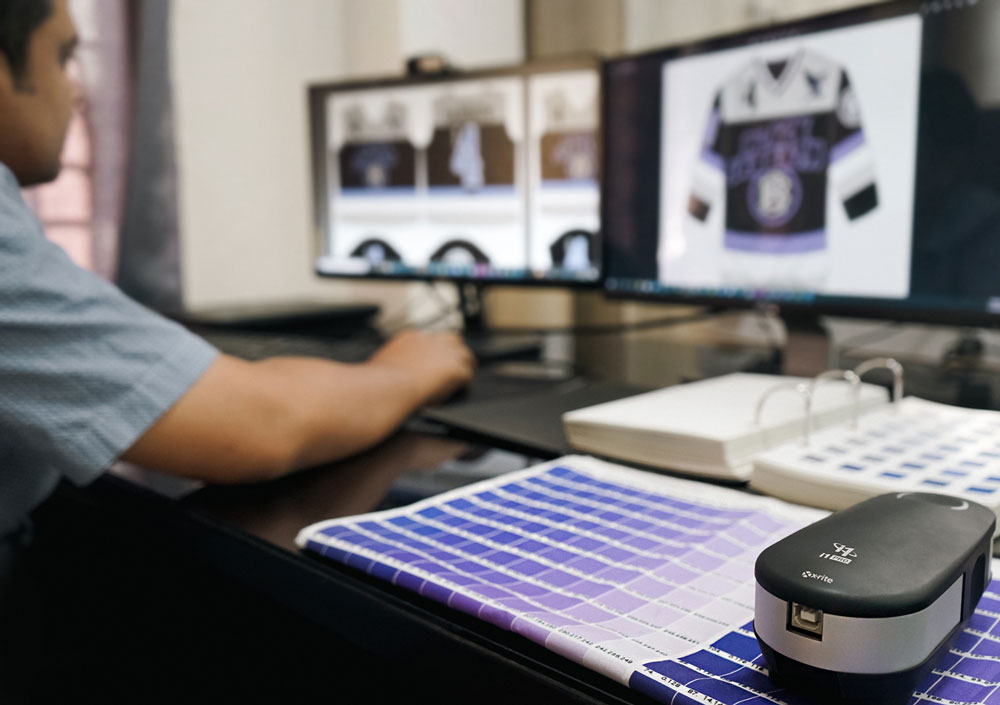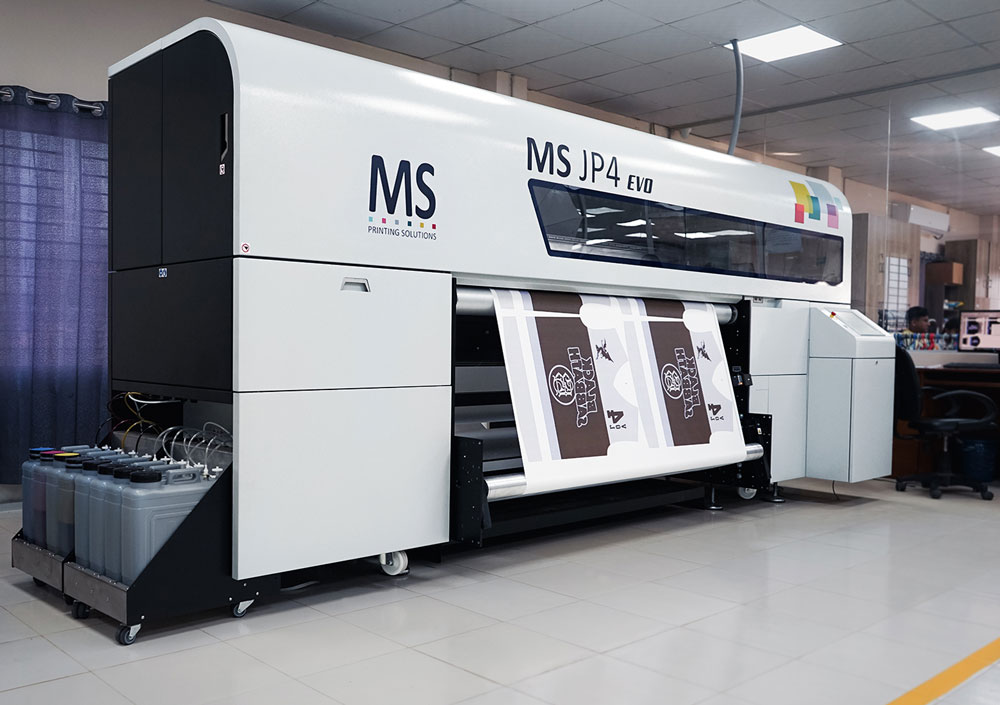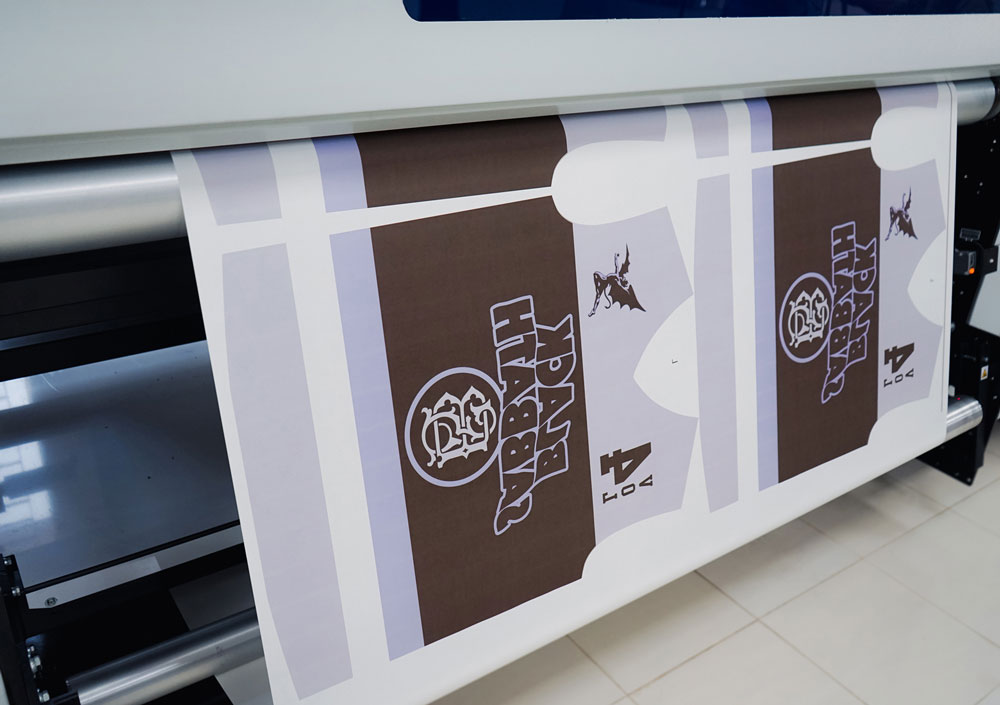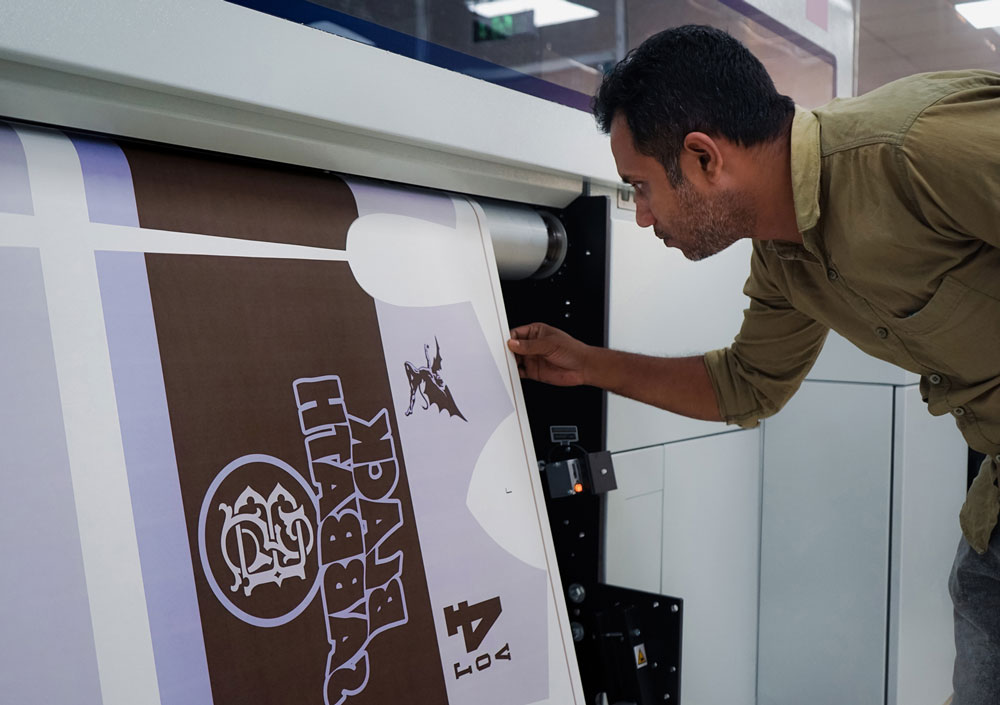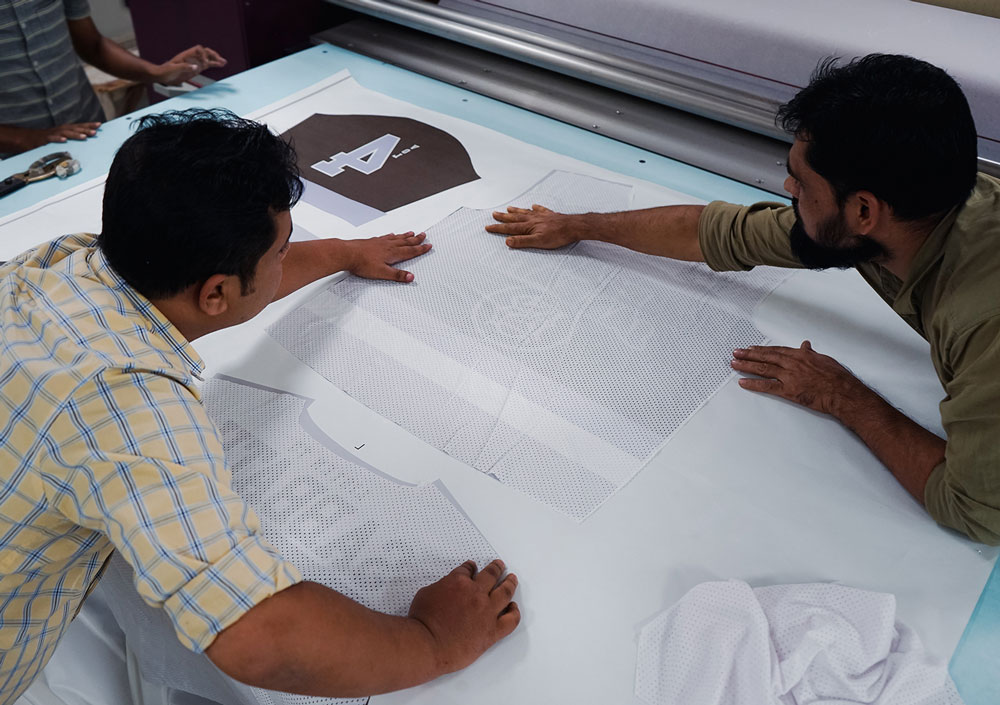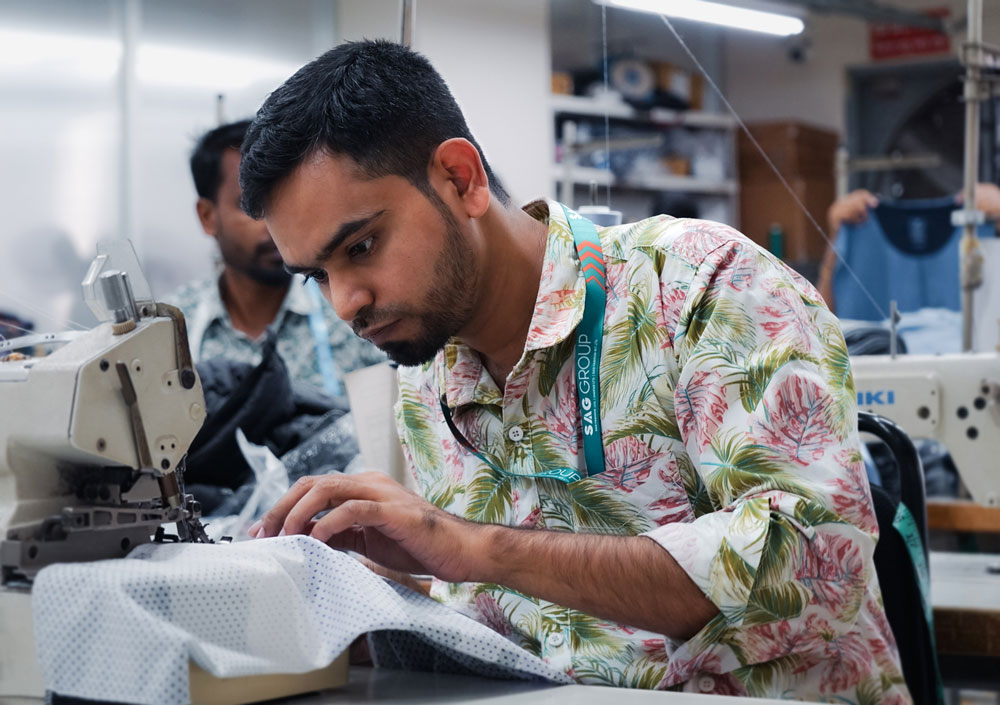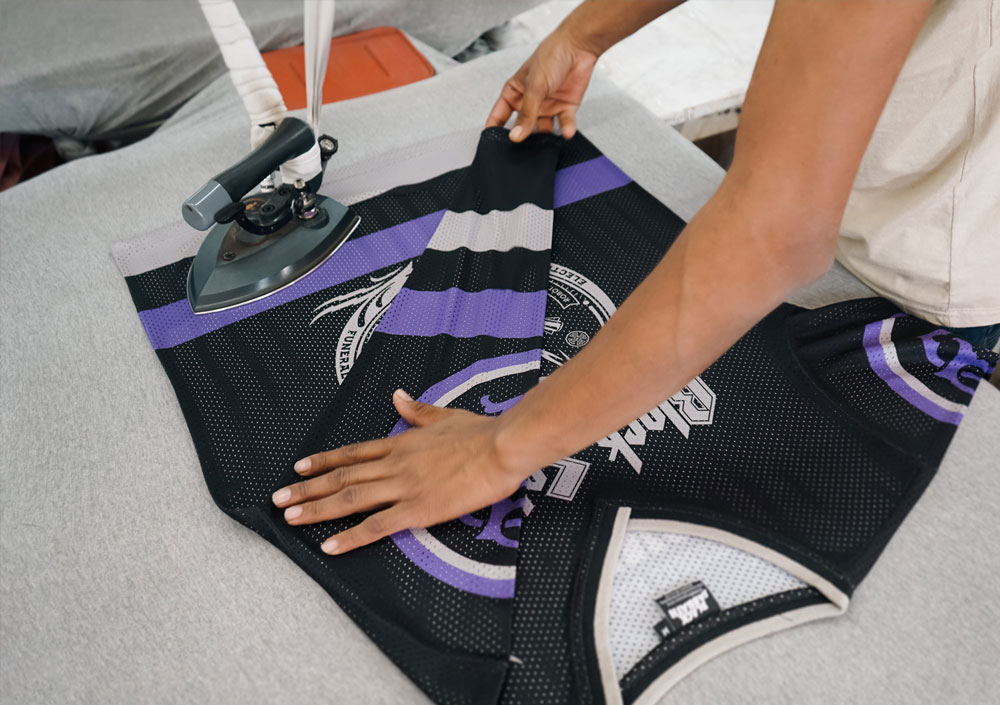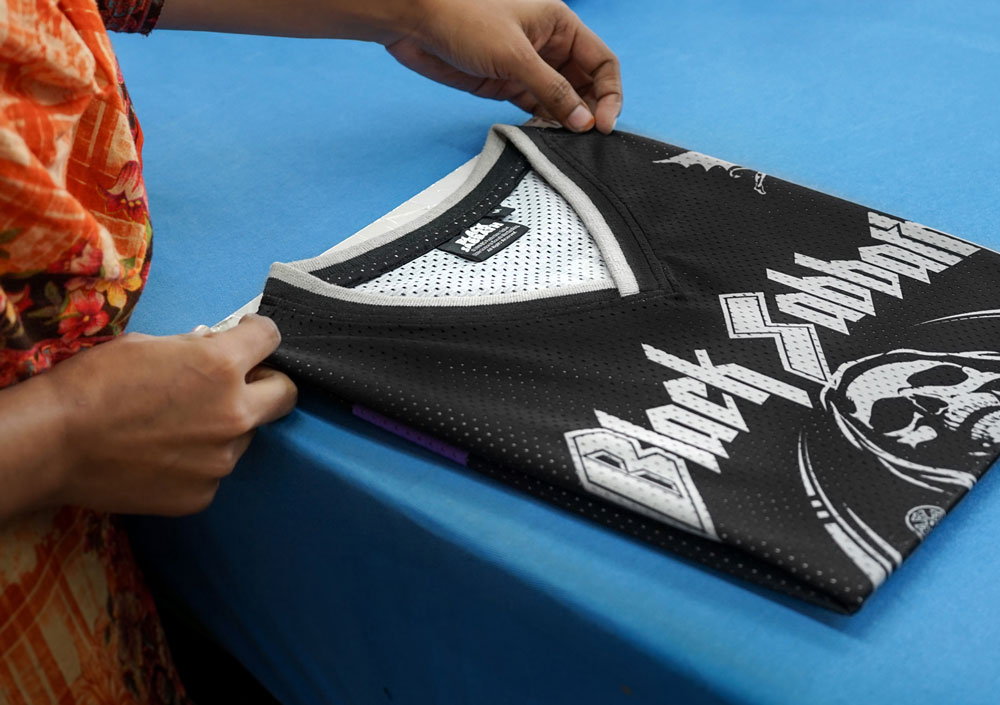Digifab Ltd.
Our digital printing experts
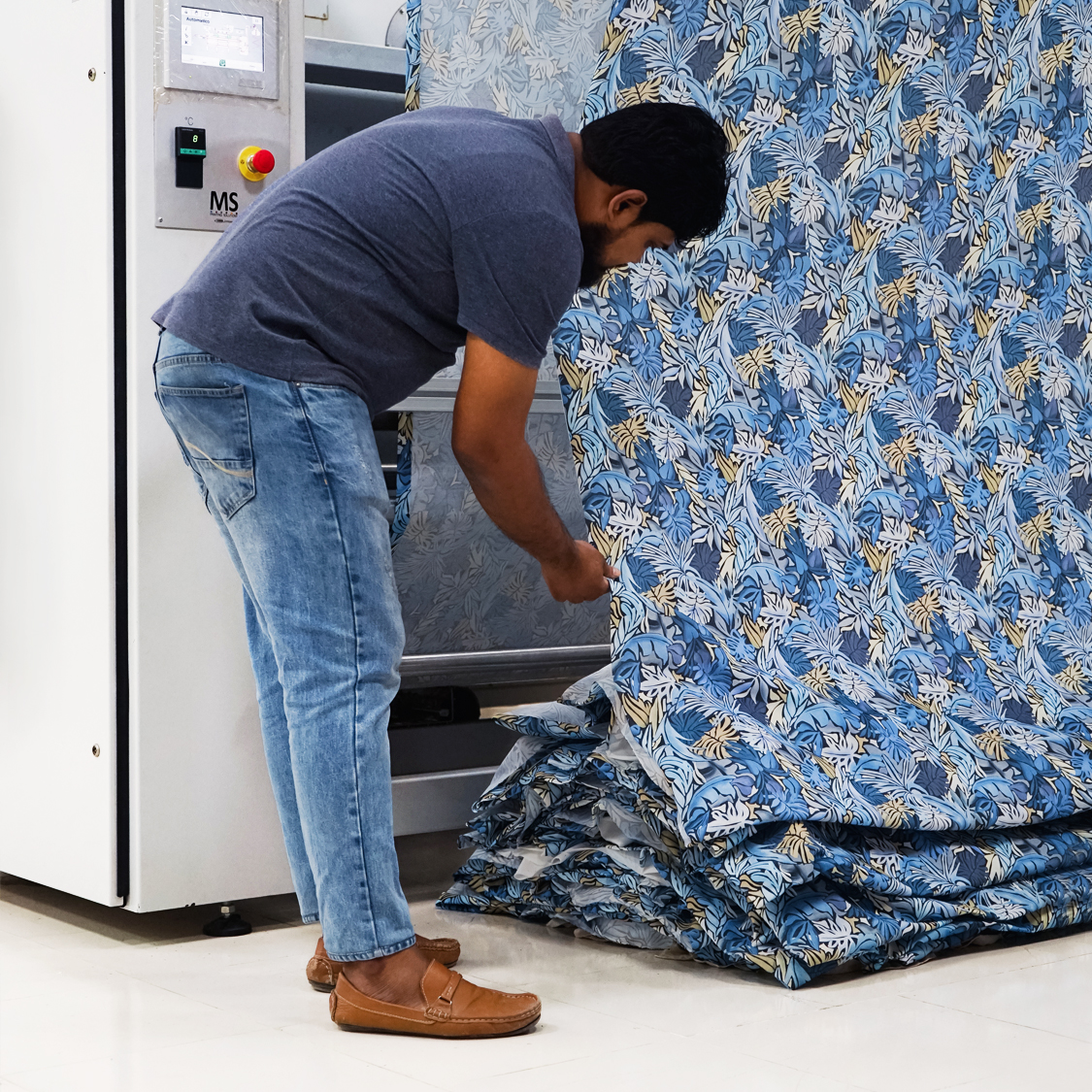

Digital
Sublimation printing
We have ten Japanese MIMAKI presses and two MS Subli JP4 EVO from Italy for paper printing. To match, two Italian Monti hot presses. Our capacity is thus 4000 - 6000 prints per day.
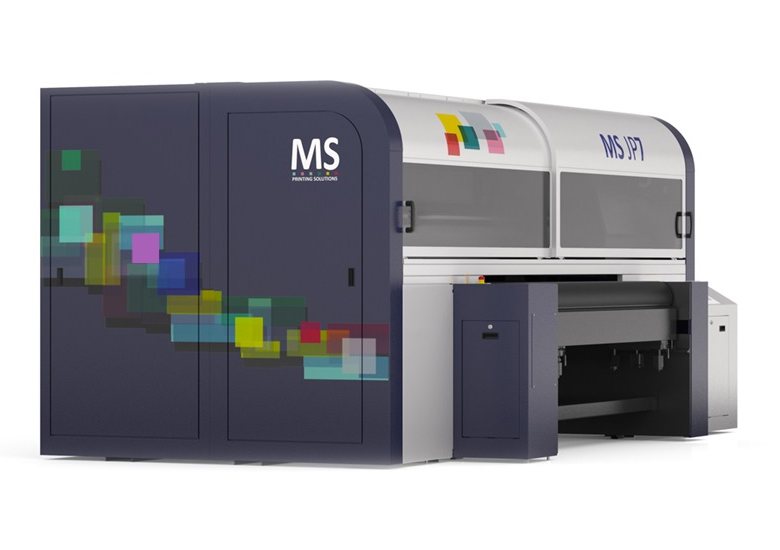
Digital
Reactive printing
With our two Italian MS JP7 printing machines for direct printing on fabric, our current capacity is up to 6000-8000 meters per day, depending on the type of fabric. We will expand this setup to increase our capacity to 12000 meters per day.
How does the printing work?
The JP4 EVO is our choice for sublimation transfer printing on polyester fabrics as well as polyester blended fabrics. The motifs are first printed on transfer paper and then transferred to blanks or rolls of fabric using a transfer press. The printer is compact, optimizing space and resource consumption in the manufacturing process without compromising performance. Sublimation printing is therefore the optimal choice for the production of sportswear.
We choose JP7 for digital reactive printing on bamu wool and natural fibers for fashion. The JP7 is an industrial digital press specifically designed to print directly onto rolls of fabric.
Our machines are manufactured by MS Printing Solutions Italy.
How we work.
Take a moment. Here you get a comprehensive look behind the scenes of our Italian machine producer MS Printing Solutions.
SAG jersey production
Polyester fabrics are used to produce the jerseys, which we print using sublimation printing with the MS Subli JP4 EVO.
Sublimation printing is a modern technique for producing sports jerseys. A special sublimation paper is printed with the design and then bonded to the polyester jersey in a heat and pressure press. The sublimation ink transforms directly from solid to gas, penetrates the textile fibers and thus ensures brilliant, color-intensive and long-lasting designs. This method enables the seamless integration of complex graphics and individual designs. This results in breathable, comfortable and high-performance sports jerseys.
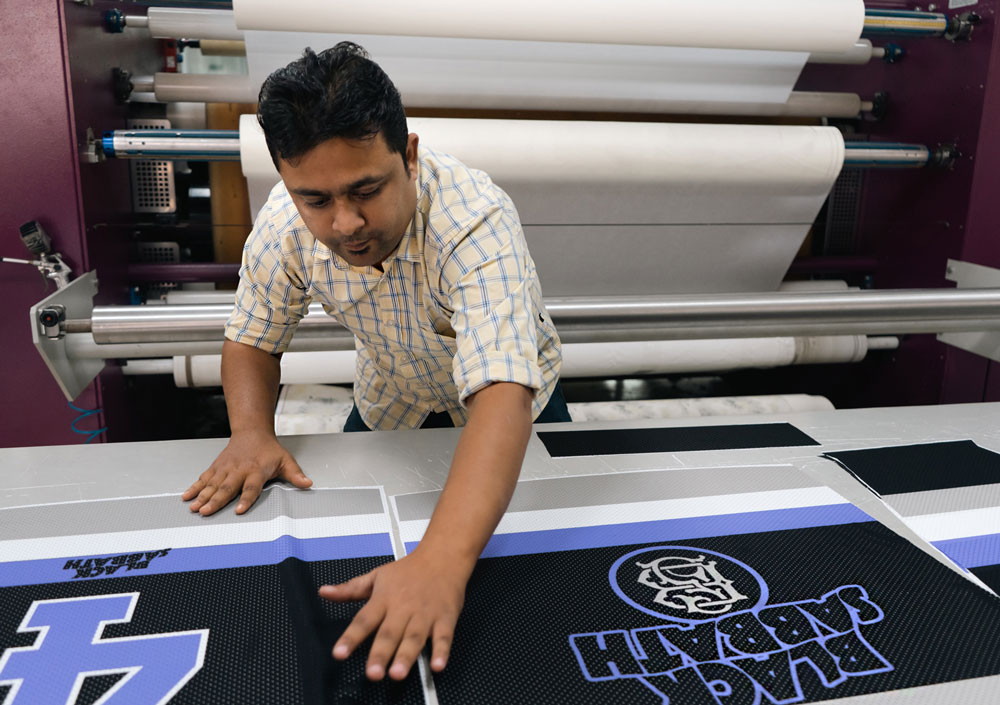
A sustainable technology
1
Environmentally friendly
From now on, we can minimize the environmental impact of textile printing together. Compared to digital printing, traditional screen printing is a liquid-intensive process. Waste disposal from unused paints, dishwater generates millions of gallons of contaminated wastewater that must be disposed of. So by switching to digital printing, you can help us increasingly reduce our environmental footprint.
2
Energy-saving
On average, a digital press consumes about 0.14 kW per printed meter, while a conventional screen press consumes an average of 0.46 kW per printed meter. This corresponds to a potential energy saving of over 63%.
3
Water-saving
The potential for water savings is enormous. Compared to conventional dyeing processes, dye-sub and pigment-based printing systems save up to 70-80 liters per printed meter. For digital printing of dispersion, reactive and acid ink systems, water savings are lower, but still in the order of 30-40 liters per printed meter.

Our partner MS Printing Solutions has joined the Sustainable Technologies project sponsored by ACIMIT.
Read more

